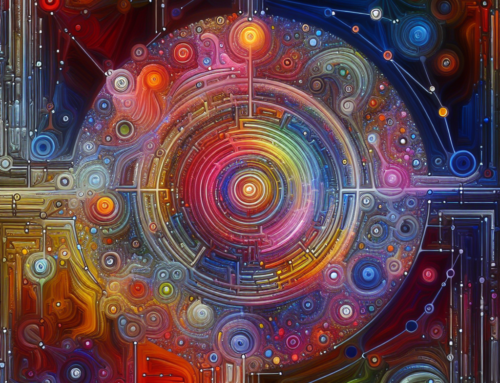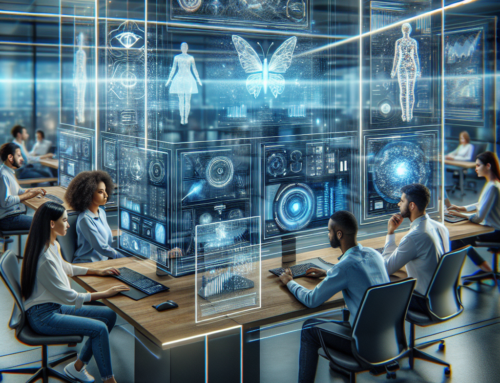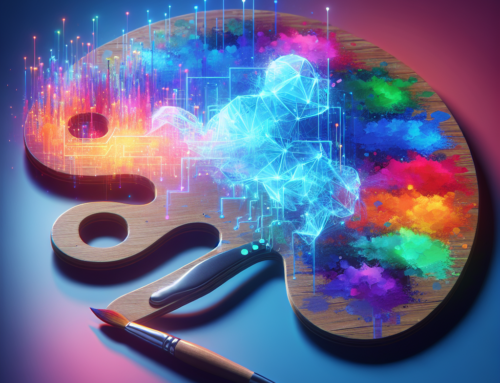Innovative Techniques in Prompt Engineering for Enhanced AI Creativity
In the ever-evolving landscape of artificial intelligence, creativity is no longer a trait reserved solely for humans. With the advent of innovative prompt engineering techniques, AI systems are now capable of generating content that rivals human creativity. But how do these systems achieve such feats? The answer lies in the art and science of crafting prompts that push the boundaries of AI capabilities. This article explores the cutting-edge techniques in prompt engineering that are enhancing AI creativity, offering insights into experimental approaches and case studies that showcase groundbreaking AI-generated content.
The Art of Crafting Innovative Prompts
At the heart of AI creativity lies the prompt—a carefully constructed input that guides the AI in generating content. Crafting innovative prompts is akin to setting the stage for a theatrical performance; the better the setup, the more compelling the outcome. In recent years, researchers and developers have been experimenting with various techniques to enhance the effectiveness of prompts. These techniques range from using metaphorical language to incorporating complex scenarios that challenge the AI’s problem-solving abilities.
One approach involves using open-ended questions that encourage the AI to explore multiple possibilities. By avoiding overly specific instructions, these prompts allow the AI to exercise its creative muscles, resulting in content that is both original and unexpected. Another technique is to use prompts that mimic human thought processes, such as asking the AI to ‘imagine’ or ‘consider’ a particular scenario. This not only enhances the AI’s ability to generate creative content but also makes the output more relatable to human audiences.
Moreover, the use of analogies and metaphors in prompts has proven to be a powerful tool in enhancing AI creativity. By framing a problem or scenario in a metaphorical context, the AI is encouraged to think outside the box, leading to innovative solutions and content. This technique is particularly effective in fields such as creative writing and art, where the ability to see beyond the literal is crucial.
Experimental Approaches to Prompt Engineering
Experimentation is at the core of advancing prompt engineering techniques. Researchers are constantly exploring new ways to push the boundaries of what AI can achieve through creative prompts. One such experimental approach involves the use of multi-modal prompts, which combine text with other forms of media such as images or audio. This not only enriches the input but also provides the AI with a broader context, leading to more nuanced and creative outputs.
Another experimental technique is the use of iterative prompts, where the AI is given a series of prompts that build upon each other. This approach allows the AI to develop a deeper understanding of the subject matter, resulting in more sophisticated and coherent content. Iterative prompts are particularly useful in complex fields such as scientific research and technical writing, where a thorough understanding of the topic is essential.
Furthermore, the use of collaborative prompts, where multiple AI systems work together to generate content, is an emerging trend in prompt engineering. By leveraging the strengths of different AI models, collaborative prompts can lead to content that is richer and more diverse. This approach is akin to a team of writers brainstorming ideas, each bringing their unique perspective to the table.
Case Studies: Breakthroughs in AI-Generated Content
To truly understand the impact of innovative prompt engineering techniques, one must look at the real-world applications and case studies that demonstrate their effectiveness. In the realm of creative writing, AI systems have been used to generate entire novels and screenplays, with prompts designed to mimic the style of renowned authors. These AI-generated works have not only captured the imagination of readers but have also sparked debates about the future of literature.
In the field of visual arts, AI systems have been trained to create original artworks based on prompts that describe abstract concepts or emotions. By interpreting these prompts, the AI is able to produce pieces that evoke a wide range of feelings, challenging traditional notions of art and creativity. These AI-generated artworks have been showcased in galleries and exhibitions, highlighting the potential of AI as a creative force.
Moreover, in the world of music, AI systems have been used to compose original scores and songs, with prompts that guide the AI in exploring different musical styles and genres. These AI-generated compositions have been performed by orchestras and bands, demonstrating the versatility and creativity of AI in the realm of music.
The Future of AI Creativity
As we look to the future, the potential for AI creativity is boundless. With continued advancements in prompt engineering techniques, AI systems will become even more adept at generating content that is not only creative but also deeply resonant with human audiences. The key to unlocking this potential lies in the ongoing experimentation and refinement of prompts, as researchers and developers strive to push the limits of what AI can achieve.
In the coming years, we can expect to see AI systems playing an increasingly prominent role in creative industries, from writing and art to music and film. As these systems become more sophisticated, they will not only complement human creativity but also inspire new forms of expression and innovation. The future of AI creativity is a collaborative one, where humans and machines work together to explore the uncharted territories of imagination.
In conclusion, the innovative techniques in prompt engineering are paving the way for a new era of AI creativity. By crafting prompts that challenge and inspire, researchers and developers are unlocking the full potential of AI systems, leading to groundbreaking content that captivates and engages audiences. As we continue to explore the possibilities of AI-generated content, one thing is certain: the future of creativity is bright, and it is being shaped by the innovative minds of today.





